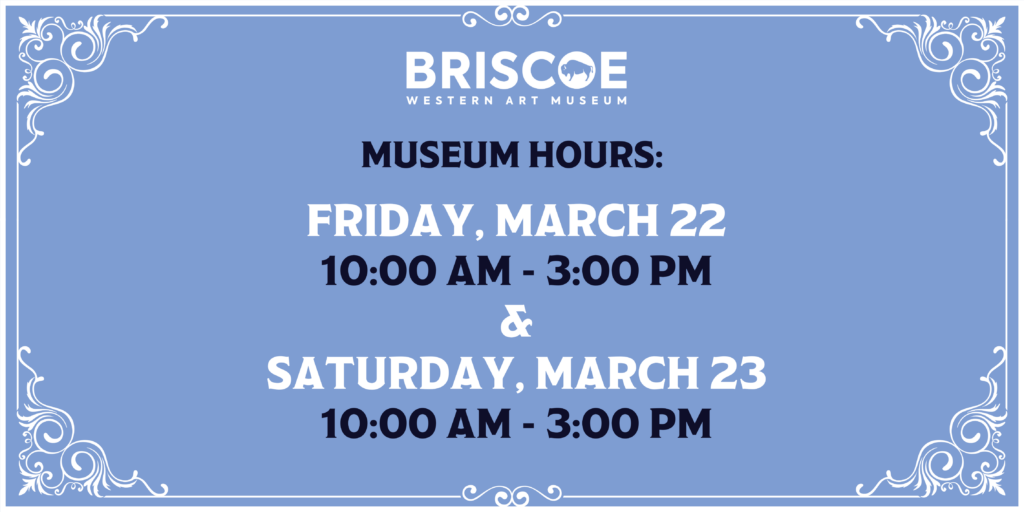Spurs
Archeological records date spurs back to the first century B.C. and the Roman Republic. Spurs were a mark of honor in the Middle Ages—a knight “earned his spurs” to indicate his prowess on horseback. During the early settlement of San Antonio, in the village of La Villita across the river from the Briscoe Museum, Canary Islanders who had gained affluence in Spanish Texas were identified by their elaborate spurs, which inspired Native people to call these them “gauchopins,” or “spurs.” From their rudimentary beginnings, spurs have evolved to be both functional and decorative. The graphic below and the examples above illustrate the changes from the simple prick spurs of the Roman period to present-day decorative artisan spurs.

Graphic from Ned and Jody Martin, Bit and Spur Makers in the Vaquero Tradition:
A Historical Perspective (Nicasio, CA: Hawk Hill Press, 1997), 46.
Spanish colonists moving northward from what is now Mexico brought with them a rich equatorial tradition. Vaqueros, who had mastered horsemanship, roping, and animal husbandry in Europe, found the plains of Northern Mexico and South Texas ideal for establishing herds of hearty Iberian livestock that were turned loose to graze. Many of these animals lived feral for months and even years at a time, adapting to the climate and landscape of South Texas until thousands ran wild along the Rio Grande. These herds eventually evolved into the Texas longhorn cattle, easily identified by their impressive horns. While many herds ran wild, those that remained established a major part of Tejano livelihood. From the Tejanos to the Californio vaqueros, each developed a regionally distinct style of spur to manage cattle. The Californio style tended to be more elaborate, inlaid silver and metallic tassels called “jingle-bobs.” The Texan style tended to be more utilitarian, without elaborate silver work and designed for work in the rough mesquite country.
During the nineteenth century, the need for high-quality, inexpensive spurs was a priority for the cowboys, who were required to supply their own and sometimes were unable to acquire custom spurs from an artisan maker. To meet these needs, a German gunsmith from Austin, Texas, named J. C. Petmecky created a spur out of a single piece of tempered steel and called it the O.K. spur. The design was flexible and more durable than spurs with shanks that were welded to the heel strap. Petmecky sold his design to the August Buermann Company (formerly North & Judd) in New Jersey. Buermann mass-produced the O.K. spurs and other similar designs to sell to poor cowboys at dry-goods stores or through catalog orders.

O.K. Spur
Spurs continue to be a significant part of Texan culture. One of the state’s largest industries, ranching, depends on the use of proper horse equipment, including spurs. Some universities, most notably Texas Tech, gift an artisan-made pair to their chancellors who have “earned their spurs” through their leadership. In San Antonio, in particular, spurs make up a huge part of daily culture because the city cheers on the professional basketball team that bears that name. Indeed, from their rudimentary beginnings centuries ago, spurs have engrained themselves into worldwide culture. They are here to stay.
BECOME A MEMBER
Help us bring the spirit of the West alive by becoming a Briscoe Partner!
Click here to become a member!
SUPPORT THE MUSEUM
Governor Dolph Briscoe and his wife Janey envisioned a Museum that would preserve the stories and traditions of the American West.






